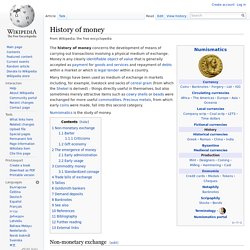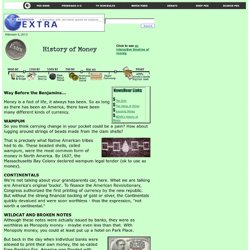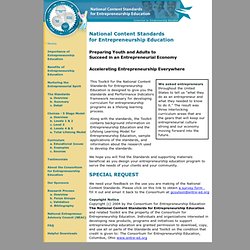

Entrepreneurial Case Studies and Success Stories. There's nothing like a good example to motivate and inspire you!

We'll take a look at case studies, testimonials, success stories, and other research on entrepreneurism. Keeping a ClientWhen a client expresses unhappiness with your pricing or service, don't hit the panic button. Use it as an opportunity to shore up the relationship and improve your business overall. Using Crowdsourcing to Save Time and Money on Your Business Crowdsourcing is gaining momentum as a solution for business problems ranging from web design and logos to complex technology solutions. A number of web portals have emerged to help small businesses put their requirement out to hundreds or thousands of experts who present solutions from which the buyers can choose. Entrepreneur Success Story: Brian Scudamore of 1-800-GOT-JUNK? Crowdsourcing: It's Not Just for Logos and Web DesignRFID and asset management firm uses crowdsourcing to develop a new technology.
The Startup GardenFormer Harvard Business Review and Inc. The New Entrepreneur: A Case Study. Economy of the fertile crescent. Economy of ancient Greece. The economy of ancient Greece was characterized by the extreme importance of importing goods, all the more so because of the relative poverty of Greece's soil.

Beginning in the 6th century BC, craftsmanship and commerce (principally maritime) developed and became increasingly more important in the classical period. Agriculture[edit] The olive tree, one of the bases of Greek agriculture is shown here at Karystos, Euboea. Greek soil's "stinginess" or "tightness" (Ancient Greek: stenokhôría, στενοχωρία) explains Greek colonialism and the importance of the cleruchies of Asia Minor in controlling the supply of wheat.
The olive tree and grapevine were complemented by the cultivation of herbs, vegetables, and oil-producing plants. Since it was so labor-intensive, agriculture employed up to 80% of the Greek population. In the ancient era, most land was held by the aristocracy. The Greeks would cut down all their enemies' olive trees to deprive them of olive oil. Crafts[edit] History of money. Many things have been used as medium of exchange in markets including, for example, livestock and sacks of cereal grain (from which the Shekel is derived) – things directly useful in themselves, but also sometimes merely attractive items such as cowry shells or beads were exchanged for more useful commodities.

Precious metals, from which early coins were made, fall into this second category. Numismatics is the study of money. Non-monetary exchange[edit] Barter[edit] In Politics Book 1:9[1] (c.350 B.C.) the Greek philosopher Aristotle contemplated on the nature of money. With barter, an individual possessing any surplus of value, such as a measure of grain or a quantity of livestock could directly exchange that for something perceived to have similar or greater value or utility, such as a clay pot or a tool. Criticisms[edit] In his book Debt: The First 5000 Years, anthropologist David Graeber argues against the suggestion that money was invented to replace barter.
Gift economy[edit] On2 Money / A History of Money. Way Before the Benjamins...

Money is a fact of life, it always has been. So as long as there has been an America, there have been many different kinds of currency. WAMPUM So you think carrying change in your pocket could be a pain? How about lugging around strings of beads made from the clam shells? That is precisely what Native American tribes had to do. CONTINENTALS We're not talking about your grandparents car, here.
WILDCAT AND BROKEN NOTES Although these notes were actually issued by banks, they were as worthless as Monopoly money - maybe even less than that. But back in the day when individual banks were allowed to print their own money, the so-called Free Banking Era, America was flooded with various currency notes - many of which were redeemable in gold or silver, but some were worthless. As for "broken" notes, the name refers to the frequency in which the banks that issued them went bust.
Currently, the $100 bill is the largest currency note in circulation. The History of Money. Share Posted 10.26.96 NOVA What is money?

By definition, it's something of value. But over the last 10,000 years, the material form that money has taken has changed considerably—from cattle and cowrie shells to today's electronic currency. Here, get an overview of the history of money. Today we value gold Kruggerands and paper Franklins, but cattle and cowrie shells have also served as currency. Entrepreneurship Unit - 9th Grade Business and Technology. Home. National Content Standards for Entrepreneurship Education Preparing Youth and Adults to Succeed in an Entrepreneurial Economy Accelerating Entrepreneurship Everywhere We hope you will find the Standards and supporting materials beneficial as you design your entrepreneurship education program to serve the needs of your clients and your community.

We need your feedback on the use you are making of the National Content Standards. Please click on this link to obtain a survey form , fill it out and email it back to the Consortium at gcoulson@entre-ed.org. Cameron Herold: Let's raise kids to be entrepreneurs.